The Enemy Strikes est un film américain de genre Guerre
The Enemy Strikes (1945)

Si vous aimez ce film, faites-le savoir !
- Infos
- Casting
- Infos techniques
- Photos
- Vidéos
- Passages TV
- Citations
- Personnages
- Musique
- Récompenses
Durée 10minutes
OrigineEtats-Unis
The Enemy Strikes! is a short propaganda film made in 1945 about the Battle of the Bulge. Its main emphasis is that, despite recent Allied victories, the Axis could still launch a counter-attack and that this was no time to get complacent.
Opening with shots of the liberation of Paris, the narrator informs the audience that this was America's honeymoon; that at the time people were concerned that the war was about to end and the difficulties of transforming back to civilian life. Particularly noted was the concern that the US had built too many tanks and artillery, and they would be sitting around, useless.
All this changes in December. The Nazis launch a massive counter-offensive in Luxembourg and Belgium, driving the Allied armies back. The Malmedy massacre and the killing of Belgian civilians is given much attention. Finally, the Americans are able to launch an air strike against the Germans and repulse the attack, but the Nazis are still fighting and trying to kill Americans.
The message of complacency is transferred to other theatres, such as the Russian, Pacific and later invasion of Germany, reminding the audience that despite recent victories, the Axis could still strike.
Commentaires
Postez un commentaire :
Suggestions de films similaires à The Enemy Strikes
Il y a 12847 ayant les mêmes genres cinématographiques (dont 323 ayant exactement les mêmes 2 genres que The Enemy Strikes), 8197 films qui ont les mêmes thèmes (dont 442 films qui ont les mêmes 4 thèmes que The Enemy Strikes), pour avoir au final 70 suggestions de films similaires.Si vous avez aimé The Enemy Strikes, vous aimerez sûrement les films similaires suivants :
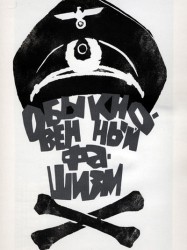
Fascisme ordinaire (1965)
, 2h18Réalisé par Mikhaïl Romm
Origine Russie
Genres Guerre, Documentaire, Historique
Thèmes Documentaire sur la guerre, Documentaire historique, Politique, Documentaire sur la Seconde Guerre mondiale
Acteurs Marlene Dietrich, Mikhaïl Romm, Jūkichi Uno
Note80%





This documentary film is about the German society, Nazi Germany government and Holocaust during World War II.
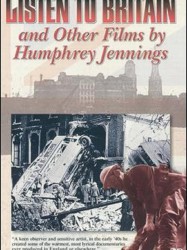
London Can Take It! (1940)
, 9minutesRéalisé par Harry Watt, Humphrey Jennings
Origine Royaume-uni
Genres Guerre, Documentaire
Thèmes Transport, Aviation, Documentaire sur la guerre, Documentaire historique, Documentaire sur les villes, Politique, Documentaire sur la Seconde Guerre mondiale
Acteurs Quentin Reynolds
Note69%





The film opens with shots of the London streets in late afternoon, as people begin their commute home. The narrator reminds the audience that these people are part of the greatest civilian army the world has ever known, and are going to join their respective service before London's "nightly visitor" arrives. Listening posts are stationed as far away as the coastline and the "white fingers" of searchlights touch the sky.
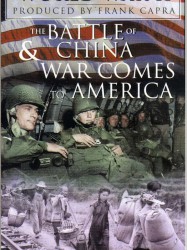
La Bataille de Chine (1944)
, 1h5Réalisé par Frank Capra, Anatole Litvak
Origine Etats-Unis
Genres Guerre, Documentaire
Thèmes Documentaire sur la guerre, Documentaire historique, Politique, Documentaire sur la Seconde Guerre mondiale
Acteurs Anthony Veiller, Walter Huston
Note69%





En envahissant la Chine, le Japon espère ensuite conquérir l’Asie toute entière. Le film utilise de nombreuses images du documentaire de Joris Ivens 400 Millions, réalisé en 1938.
 , 54minutes
, 54minutesOrigine Etats-Unis
Genres Guerre, Documentaire
Thèmes Documentaire sur la guerre, Documentaire historique, Politique, Documentaire sur la Seconde Guerre mondiale
Acteurs Leo Genn, Burgess Meredith, Anthony Veiller, Lloyd Nolan
Note62%






Westward Ho! (1940)
, 8minutesRéalisé par Thorold Dickinson
Origine Royaume-uni
Genres Guerre, Documentaire
Thèmes Documentaire sur la guerre, Documentaire historique, Politique, Documentaire sur la Seconde Guerre mondiale
Note60%





A group of schoolchildren from London are preparing for evacuation. After a medical examination, they meet at a railway station, uncertain of their destination. The train arrives and their journey to the countryside begins. Many of them have never seen the countryside before, and enjoy looking out of the carriage windows during the trip.

The 957th Day (1944)
, 10minutesOrigine Etats-Unis
Genres Guerre, Documentaire
Thèmes Documentaire sur la guerre, Documentaire historique, Politique, Documentaire sur la Seconde Guerre mondiale
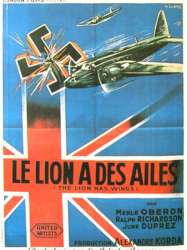
Le lion a des ailes (1939)
, 1h16Réalisé par Michael Powell, Adrian Brunel, Alexander Korda, Brian Desmond Hurst
Origine Royaume-uni
Genres Drame, Guerre, Documentaire
Thèmes Politique, Transport, Aviation, Documentaire sur la guerre, Documentaire historique, Politique, Documentaire sur la Seconde Guerre mondiale
Acteurs Merle Oberon, Ralph Richardson, June Duprez, Flora Robson, Robert Douglas, Anthony Bushell
Note57%





Le lion a des ailes est un ancêtre de nos docu-fictions, film de guerre ou de propagande destiné, grâce à un mélange de documentaires sur l'effort de guerre britannique et de parties jouées par des acteurs - qui s'enchâssent entre eux et leur donnent vie - à rassurer la population sur la préparation de leurs armées (sur terre, sur les mers et, particulièrement, dans les airs). Le film commence par un historique des promesses non tenues par Hitler, avec ses diverses invasions de territoires et la manière dont les autres pays l'ont laissé faire. En contrepartie de la militarisation à outrance des Allemands, l'effort britannique est montré comme efficace et durable. Cette fois, ils sont prêts et peuvent tenir. La plus grande partie montre les combats de la RAF, expliquant le dispositif qui empêche l'ennemi de prendre le pays au dépourvu et de l'attaquer.
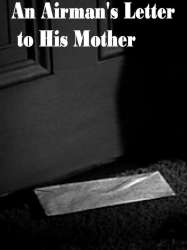 , 5minutes
, 5minutesRéalisé par Michael Powell
Origine Royaume-uni
Genres Guerre, Documentaire
Thèmes Politique, Transport, Aviation, Documentaire sur la guerre, Documentaire historique, Politique, Documentaire sur la Seconde Guerre mondiale, Film catastrophe, Film de catastrophe aérienne
Acteurs John Gielgud
Note68%





Film de propagande réalisé à partir d'une lettre d'un pilote de la Royal Air Force à sa mère, à propos de son engagement, parue dans le Times de Londres.

A Challenge To Democracy (1944)
, 21minutesOrigine Etats-Unis
Genres Guerre, Documentaire, Historique
Thèmes La prison, Le racisme, Documentaire sur la discrimination, Documentaire sur le droit, Documentaire sur la guerre, Documentaire historique, Politique, Documentaire sur la Seconde Guerre mondiale
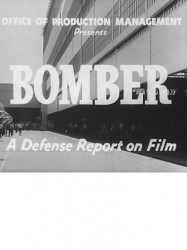
Bomber (1941)
, 10minutesOrigine Etats-Unis
Genres Guerre, Documentaire
Thèmes Politique, Transport, Aviation, Documentaire sur la guerre, Documentaire historique, Documentaire sur les technologies, Politique, Documentaire sur la Seconde Guerre mondiale, Forces armées des États-Unis
Note53%





 Connexion
Connexion